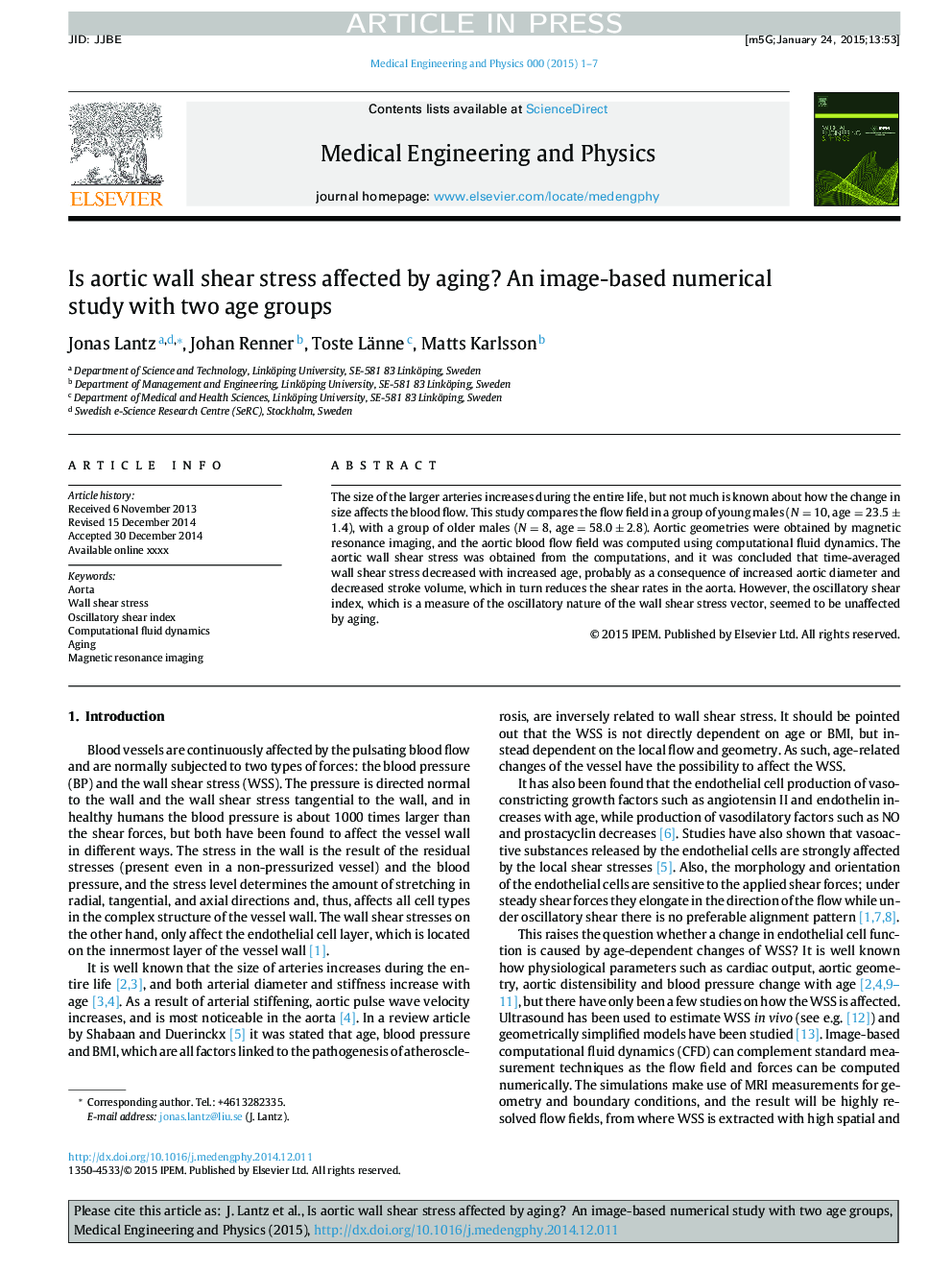| Article ID | Journal | Published Year | Pages | File Type |
|---|---|---|---|---|
| 10435043 | Medical Engineering & Physics | 2015 | 7 Pages |
Abstract
The size of the larger arteries increases during the entire life, but not much is known about how the change in size affects the blood flow. This study compares the flow field in a group of young males (N = 10, age = 23.5 ± 1.4), with a group of older males (N = 8, age = 58.0 ± 2.8). Aortic geometries were obtained by magnetic resonance imaging, and the aortic blood flow field was computed using computational fluid dynamics. The aortic wall shear stress was obtained from the computations, and it was concluded that time-averaged wall shear stress decreased with increased age, probably as a consequence of increased aortic diameter and decreased stroke volume, which in turn reduces the shear rates in the aorta. However, the oscillatory shear index, which is a measure of the oscillatory nature of the wall shear stress vector, seemed to be unaffected by aging.
Keywords
Related Topics
Physical Sciences and Engineering
Engineering
Biomedical Engineering
Authors
Jonas Lantz, Johan Renner, Toste Länne, Matts Karlsson,
